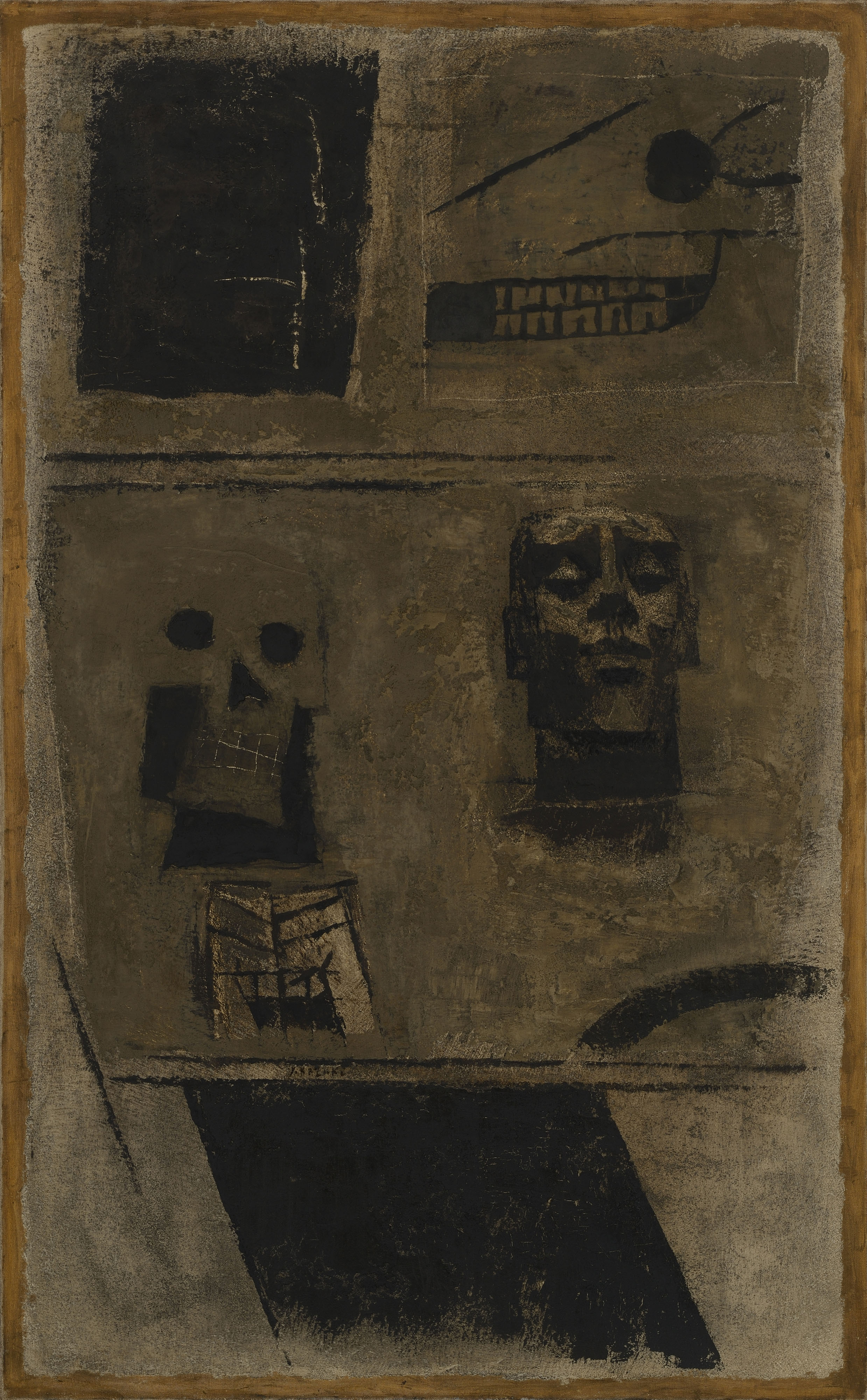
じょうきゃく 乗客
1957(昭和32年)
油彩/カンヴァス
〈画家のことば〉
荷役作業が終ると、我々は再び貨車に乗せられて、西へ西へと十日近くも運ばれた。ざっと3000キロも走ってシーラという小さな町へついた。そこからさらに80キロの極寒の道を、トラックに乗せられてセーヤ収容所へ向う。零下30度のトラックの旅はつらかった。むき出しの荷台に詰めこまれて、雪の悪路を進む。防寒帽、防寒服の中の身体は、そのまま凍結するのではないかと思った。顔はこわばり、目をあけているのがやっとであった。
この先に人間の生きていられる土地があるのだろうか。死のみが待ち受けている地獄へ向うトラックであるとすれば、我々といっしょに、骸骨の姿をした死神が乗っているのだ、としか思えなかった。
『シベリヤ画集』(新潮社、1971年)
香月泰男【かづき やすお】
生没年 1911~1974(明治44年~昭和49年)
山口県大津郡三隅村(現・長門市三隅)に生まれた香月泰男は、東京美術学校で油彩画を学び、美術教員の傍ら国画会を中心に作品を発表しました。1967年、太平洋戦争への従軍と戦後のシベリア抑留の経験を描いた「シベリア・シリーズ」により、第一回日本芸術大賞を受賞。その作品は今日も多くの人々を惹きつけています。
| 寸法 | 116.8×72.6cm |
|---|---|
| 形状 | 額装 |

Passengers
1957
Oil on canvas
〈Painter’s words〉
When we had finished the unloading tasks, we were put back on the train and headed further west for what seemed like ten days, covering around 3,000 km. We finally arrived at a small town called Shira. We were then loaded on trucks for the final 80 km journey by road through the bitter cold to the Seya concentration camp. Packed tightly onto exposed open truck trays in temperatures of 30° below zero, we endured a nightmare journey over bad roads covered in snow. Our winter clothes and winter hats were no match for the cold, and I felt frozen to the core. My face had hardened so badly that it was all I could do just to open my eyes.
I wondered how human beings could survive in such a place. My sole thought was that if our truck was taking us to a hell where only death awaited, then surely the god of death, represented by a skeleton of course, must be on the truck with us.
Siberian Series (Shinchosha, 1971)
Kazuki Yasuo 1911 – 1974
Born in Misumi-mura (now Misumi, Nagato City) in Otsu-gun, Yamaguchi Prefecture. Studied oil painting at Tokyo School of Fine Arts, then taught fine art while producing works that were primarily exhibited at Kokugakai (National Painting Association). Kazuki was sent to fight in the Pacific War (WWII), then interned in Siberia after the war. This experience resulted in the Siberia Series, which won the inaugural Japan Art Grand Prize in 1967. This series is considered an important body of work that still resonates widely today.
| Size | 116.8×72.6cm |
|---|

乘客
1957
《畫家的話》
卸貨工作結束後,我們又被安排上貨車,一路向西,被運送了將近十天。大約跑了3000公裏,到達一個叫希拉的小鎮。從那裏再經過80公裏的極寒之路,乘坐卡車前往塞亞戰俘營。零下30度的卡車之旅非常艱辛。乘坐在裸露的貨車上,在風雪惡劣的道路上前進。戴著防寒帽,穿著防寒服的身體,感覺就這樣會被凍住一樣。臉也凍僵了,隻能勉強睜開眼睛。
前方真的是人類生存的土地嗎?如果這是一輛開往地獄的卡車,那麽跟我們一起乘坐的,肯定還有骷髏模樣的死神。
《西伯利亞畫集》(新潮社 1971年)
香月泰男
生卒年 1911~1974(明治44年~昭和49年)
香月泰男出生於山口縣大津郡三隅村(現長門市三隅),在東京美術學校學習油畫,在擔任美術教員的同時,主要在國畫會發表作品。1967年, “西伯利亞係列 “獲得了第一屆日本藝術大獎,描繪了香月在太平洋戰爭中服役以及戰後被關押在西伯利亞的經曆。那些作品至今也受很多人歡迎。
| 尺寸 | 116.8×72.6cm |
|---|
